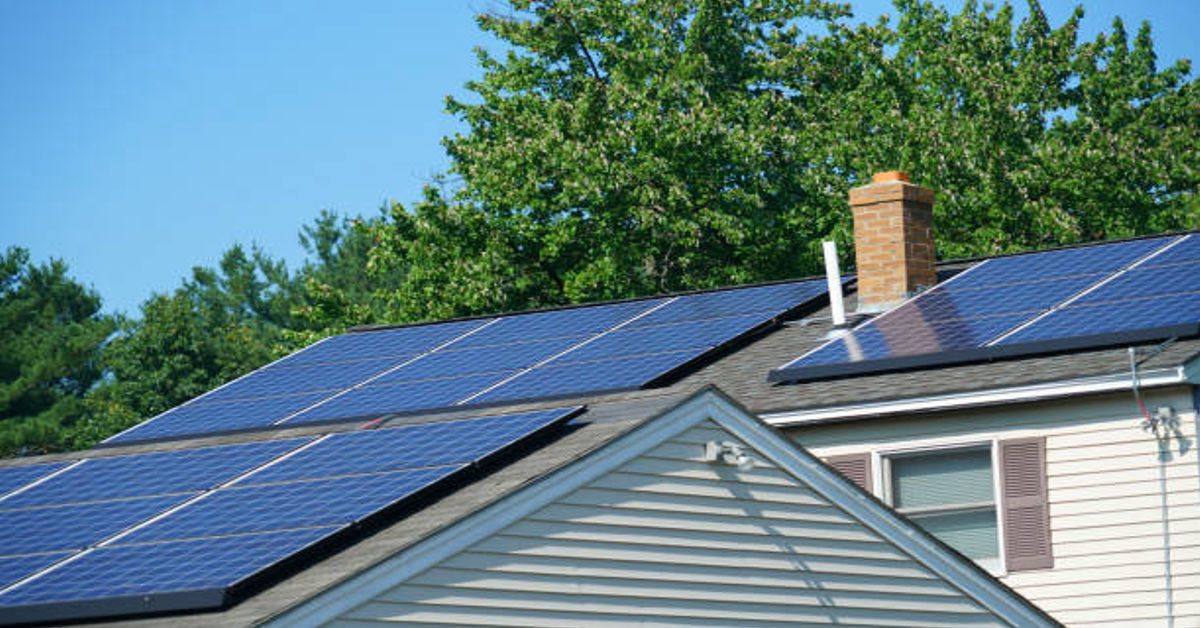Solar energy has moved from niche to regular. Homeowners are installing panels not only to keep on monthly electric bills however additionally to make their properties extra attractive to consumers. If you’re weighing options, a short examination of fees, incentives, and neighborhood carrier will inform you whether or not a rooftop array makes sense for your house.
Why panels cut your electric bill
When sunlight hits panels, it will become energy that your property can use properly. Send excess technology back to the grid and, under ordinary policies, you earn credit that offsets destiny intake, and Solar Panel Installer makes use of it in real time, and your meter spins greater slowly. That simple switch — sun for grid power — is why monthly payments reduce. Also, cutting-edge panels are greener than older fashions; they produce extra watts in keeping with square foot, and setup prices have dropped compared with a decade in the past. For context, typical hooked up charges in current years have been in the low unmarried digits according to watt before incentives, so a 6 kW gadget typically charges in the mid 5 figures before credits.
How quickly you see savings
Savings rely on how much strength you operate, the size of the machine, and local charges. In many locations, homeowners reach “payback” — while cumulative savings same the up-front fee — inside a handful of years. Some recent estimates for common systems display payback home windows of roughly six to ten years, though specific instances in Pennsylvania might also range. After payback, the power produced is successfully unfastened (minus preservation), and that is where long-term financial savings collect.
Incentives that matter
A major factor is the federal credit for residential clean energy, which reduces the net cost of systems by a substantial percentage. That credit alone can shave thousands off your upfront price and shorten the payback period. State and local programs can add additional incentives or favorable billing rules, so the exact economics are regional — and worth checking before you sign a contract.
Finding the right people and estimating costs
A good solar installer makes the difference between a system that hums quietly and one that causes headaches. When you search for help, prioritize experience, local references, and clear warranties. If you live in Pennsylvania, look for Pennsylvania home Solar installers who understand local permitting, utility interconnection, and weather patterns. They’ll also know how to size a system for your roof’s orientation and shade patterns. Use multiple quotes to compare scope, not just price.
A transparent estimate will list panel brand, inverter type, racking, and expected annual production. Those line items let you compare apples to apples. Trust the numbers that come with documented assumptions — for example, assumed degradation rates, expected production in kilowatt-hours, and maintenance allowances.
What increases home value
Solar arrays can raise resale value. Large studies have found that homes with installed photovoltaics often sell for more than comparable homes without them. The lift in value comes from two places: the promise of lower ongoing energy costs, and buyer preference for homes that already have a clean energy system in place. Of course, older arrays with expired warranties will be valued differently than a new, well-documented system.
How to present solar to buyers
- Keep permits and interconnection paperwork in a folder.
- Show maintenance records and the inverter’s age.
- Clarify whether panels are owned or leased — ownership typically adds the most value.
- Provide projected annual production and recent utility bills.
These simple documents reduce buyer uncertainty and make the solar benefit tangible.
Practical steps for Pennsylvania homeowners
For Solar Panel Cost Estimating, ask each installer to itemize equipment, labor, and soft costs (permitting, inspections, interconnection fees). Pennsylvania participates in net metering and has local programs and directories of qualified installers. If you’re in the state, search lists from trusted local organizations and confirm that your utility offers net metering terms that work for your usage pattern. Also consider whether your municipality has streamlined permitting or incentives; installers who regularly work in Pennsylvania will know the local nuances.
Final checklist before you sign
Solar is both a utility and a home improvement. Treated like both, it delivers savings and adds curb appeal. With clear estimates, a reliable installer, and a few common-sense protections, panels can cut your bills and lift the market value of your home — sometimes substantially. If you want, I can draft a short list of questions to bring to three local home Solar installers so you get comparable bids.
FAQs
Did the Solar Installer consist of a full, written Solar Panel Cost breakdown?
Yes, the Solar Installer has to provide a complete, written solar panel cost breakdown detailing system, expenditures, and gentle prices.
Are warranties for panels and inverters without a doubt?
Yes, warranties for each panel and inverter need to be sincerely said and clean to verify.
Has the installer documented the assumed strength of manufacturing?
Yes, the installer should record the assumed annual energy manufacturing in conjunction with the factors used to calculate it.
Do the payback and cash-flow numbers make sense given your current application quotes?
Yes, the payback and cash glide numbers must align with your modern software costs and anticipated utilization.
Are neighborhood rebates, tax credits, and net metering rules accounted for?
Yes, all local rebates, tax credits, and net-metering rules need to be completely protected in the suggestion.

